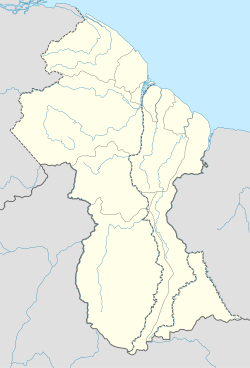Jacklow | |
|---|---|
Village | |
 | |
| Coordinates: 7°19′36″N58°39′42″W / 7.3267°N 58.6618°W | |
| Country | |
| Region | Pomeroon-Supenaam |
| Population (2012) [1] | |
• Total | 701 |
Jacklow is a village in the Pomeroon-Supenaam Region of Guyana. The village is mainly inhabited by Indo-Guyanese and Amerindian people. [1] Jacklow is situated on the Pomeroon River. [2]

